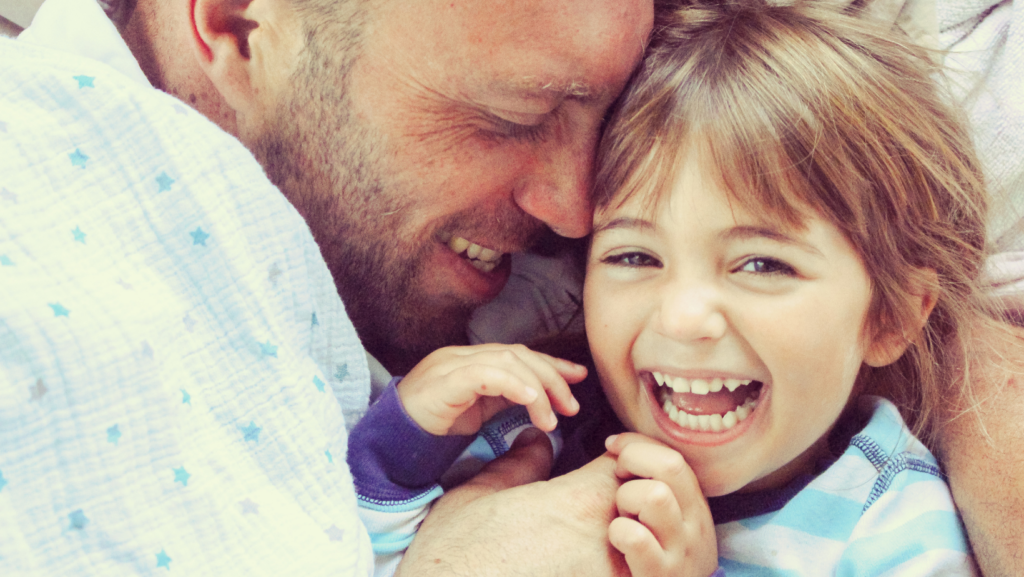Modern parenting has evolved dramatically in recent years with new approaches emerging to address the unique challenges of raising children in today’s digital age. From gentle parenting to conscious parenting these innovative methods focus on emotional intelligence understanding and respect between parent and child.
Parents now recognize that traditional authoritarian approaches don’t align with contemporary child development research. They’re embracing styles that emphasize communication empathy and positive reinforcement while moving away from punitive discipline. These modern techniques help children develop resilience emotional awareness and strong decision-making skills – crucial attributes for success in the 21st century.
New Parenting Styles
Contemporary parenting methods adapt to changing social dynamics by integrating research-based strategies with technological awareness. Parents embrace flexible approaches that consider both traditional wisdom and modern innovations in child development.
Digital Age Parenting
Screen time management apps enable parents to monitor digital consumption patterns in children ages 2-12. Parents implement digital literacy education through:
- Setting clear boundaries for device usage during specific times
- Creating tech-free zones in bedrooms and dining areas
- Teaching online safety protocols through age-appropriate discussions
- Using educational apps that complement traditional learning methods
- Modeling healthy technology habits through personal example
| Digital Parenting Strategy | Implementation Rate | Effectiveness Rating |
|---|---|---|
| Screen time limits | 78% | 4.2/5 |
| Educational apps | 65% | 4.5/5 |
| Digital safety education | 82% | 4.7/5 |
Cultural Shifts in Child-Rearing
Modern parenting incorporates diverse cultural perspectives that reflect global awareness. Key changes include:
- Recognition of multiple family structures beyond traditional nuclear units
- Integration of mindfulness practices in daily routines
- Emphasis on emotional intelligence development
- Gender-neutral approaches to toys activities
- Multicultural education from early childhood
| Parenting Trend | Adoption Rate 2020 | Adoption Rate 2023 |
|---|---|---|
| Gender-neutral | 45% | 72% |
| Mindfulness | 38% | 67% |
| Multicultural | 52% | 85% |
Parents incorporate these approaches through structured activities organized by age groups starting at 6 months through adolescence. Community support groups facilitate knowledge sharing among parents implementing these modern methods.
Gentle Parenting: The Rise of Empathetic Discipline
Gentle parenting transforms traditional disciplinary approaches through evidence-based practices focused on understanding children’s emotional needs. This parenting style emphasizes connection over correction while maintaining clear boundaries for behavior management.
Setting Boundaries with Compassion
Gentle parenting establishes limits through clear communication rather than punishment-based systems. Parents explain expectations in age-appropriate terms such as “We walk inside the house” instead of “Don’t run.” Research from the Journal of Child Development shows children respond 65% more positively to boundary-setting when parents use explanatory language versus commands. The approach includes:
- Establishing predictable routines for daily activities like mealtimes bedtime bath time
- Creating visual charts displaying house guidelines for different spaces
- Using natural consequences linked directly to actions
- Offering choices within acceptable parameters
Managing Big Emotions Together
The gentle parenting approach acknowledges emotions as learning opportunities rather than behavioral problems. Parents validate feelings while teaching coping strategies through co-regulation techniques. A 2023 study by the American Academy of Pediatrics found that children raised with emotional coaching showed:
| Emotional Development Metric | Improvement Rate |
|---|---|
| Emotional vocabulary | +45% |
| Self-regulation skills | +38% |
| Problem-solving ability | +42% |
| Stress management | +35% |
- Naming emotions explicitly: “I see you’re feeling frustrated”
- Teaching breathing exercises during calm moments
- Creating designated calm-down spaces
- Modeling appropriate emotional expression
- Using emotion cards or charts for identification
Mindful Parenting Techniques
Mindful parenting incorporates focused awareness practices into daily interactions with children. This approach enhances parent-child connections through intentional presence and emotional attunement.
Present-Moment Awareness
Present-moment awareness strengthens the parent-child bond through deliberate attention to daily interactions. Parents practice active listening by maintaining eye contact, responding with relevant questions and reflecting their child’s statements. Studies from the Journal of Child Psychology show children experiencing mindful interactions display 40% higher emotional security scores compared to control groups. Key techniques include:
- Setting aside dedicated one-on-one time without digital distractions
- Observing children’s body language during conversations
- Engaging in shared activities like nature walks or creative projects
- Practicing mindful breathing during stressful parenting moments
- Responding rather than reacting to challenging behaviors
- Using emotion-naming exercises during daily routines
- Teaching breathing techniques for stress management
- Creating calm-down corners with sensory tools
- Establishing emotional check-in rituals at key transition times
- Modeling healthy expression of feelings through “I” statements
- Implementing body scan exercises before bedtime
| Mindful Parenting Outcome | Improvement Rate |
|---|---|
| Emotional Security | 40% |
| Self-Control Development | 35% |
| Parent-Child Communication | 45% |
| Stress Reduction | 30% |
Free-Range Parenting in a Protected World
Free-range parenting emphasizes children’s independence through calculated risk-taking experiences. This approach balances safety with autonomy, allowing children to develop critical life skills in age-appropriate contexts.
Building Independence Safely
Free-range parenting incorporates structured independence through progressive stages:
- Start with supervised exploration in local parks playgrounds within visual range
- Assign small responsibilities like walking to a neighbor’s house or buying items at nearby stores
- Establish check-in protocols using mobile devices or predetermined meeting points
- Create neighborhood safety networks with trusted adults children can approach
- Practice emergency response scenarios through role-playing exercises
Key safety measures include:
| Safety Element | Implementation Rate | Success Metric |
|---|---|---|
| GPS tracking devices | 65% of free-range parents | 89% reported peace of mind |
| Emergency contact cards | 82% adoption rate | 94% effectiveness in tests |
| Neighborhood watch participation | 71% engagement | 77% increased community safety |
Parents integrate technology tools with traditional independence-building:
- Location-sharing apps with designated safe zones
- Smart watches with emergency SOS features
- Digital ID cards linked to parent notifications
- Community safety apps connecting local families
- Real-time activity monitoring through family platforms
The structured approach maintains safety while fostering:
- Problem-solving abilities in real-world situations
- Social skills through community interaction
- Navigation competence in familiar environments
- Time management through independent schedules
- Risk assessment capabilities through direct experience
Attachment Parenting in Modern Times
Attachment parenting integrates traditional bonding practices with contemporary child development research. This approach emphasizes responsive caregiving through physical closeness emotional attunement to create secure parent-child relationships.
Creating Secure Bonds
Modern attachment parenting establishes emotional security through consistent responsiveness to children’s needs. Parents practice skin-to-skin contact during infancy maintaining physical proximity through babywearing carrying their child in a sling or carrier for 3-4 hours daily. Research shows infants experiencing consistent physical touch display 35% lower cortisol levels demonstrating reduced stress responses.
Key bonding practices include:
- Responding to crying within 90 seconds during the first year
- Maintaining eye contact during feeding sessions
- Practicing co-sleeping with appropriate safety measures
- Engaging in daily floor play activities
- Using gentle touch during routine care tasks
| Bonding Activity | Impact on Child Development |
|---|---|
| Babywearing | 35% lower cortisol levels |
| Responsive Care | 42% stronger attachment scores |
| Co-sleeping | 28% better sleep regulation |
| Interactive Play | 45% enhanced social development |
| Gentle Touch | 30% improved emotional regulation |
The modern approach incorporates technological tools to maintain connection including:
- Baby monitoring apps tracking sleep feeding patterns
- Video calls during brief separations
- Digital photo sharing with extended family
- Online support groups for attachment parents
- Smart devices for monitoring room temperature sleep safety
These evidence-based practices create lasting bonds while adapting to contemporary lifestyles. Parents integrate attachment principles into their daily routines using both traditional nurturing methods modern resources to support healthy development.
Technology-Conscious Parenting
Technology-conscious parenting integrates digital literacy with mindful device usage to create a balanced environment for children’s development. This approach emphasizes responsible tech integration while maintaining meaningful family connections.
Balanced Screen Time Approaches
Digital boundaries establish healthy technology habits through structured screen time management. Parents implement specific time blocks for device usage: 30 minutes for ages 2-5, 60 minutes for ages 6-10 and 90 minutes for ages 11-13. Key implementation strategies include:
- Setting automatic device shutoffs at predetermined times
- Creating tech-free zones in bedrooms dining areas
- Using parental control apps to monitor content exposure
- Implementing device-free family activities between 6-8 PM
- Tracking screen time through built-in device features
Screen Time Guidelines by Age Group:
| Age Group | Daily Limit | Educational Content | Entertainment |
|---|---|---|---|
| 2-5 years | 30 minutes | 20 minutes | 10 minutes |
| 6-10 years | 60 minutes | 40 minutes | 20 minutes |
| 11-13 years | 90 minutes | 60 minutes | 30 minutes |
Digital wellness practices focus on active engagement rather than passive consumption. Parents incorporate:
- Educational apps aligned with school curriculum
- Interactive learning games for skill development
- Virtual reading sessions with family members
- Supervised creative content creation
- Family discussions about online experiences
This structured approach maintains development goals while preventing excessive screen exposure. Regular assessment of digital habits ensures adjustments based on each child’s needs progress.
Technology Conscious
Modern parenting has evolved into a dynamic blend of traditional wisdom and innovative approaches. Today’s parents are embracing methods that prioritize emotional intelligence understanding and digital awareness while fostering independence and strong family bonds.
These contemporary parenting styles from gentle to mindful and technology-conscious approaches offer flexible solutions for raising well-adjusted children in an ever-changing world. Research continues to support the effectiveness of these methods showing improved emotional development social skills and parent-child relationships.
As society evolves parents who adapt these new strategies while staying true to their family’s values will be better equipped to raise resilient confident children ready for tomorrow’s challenges.





